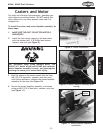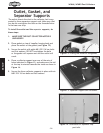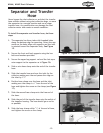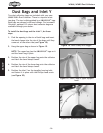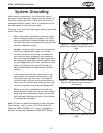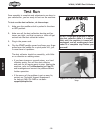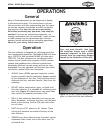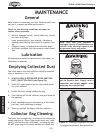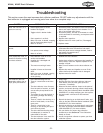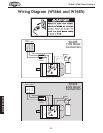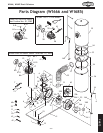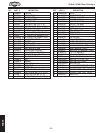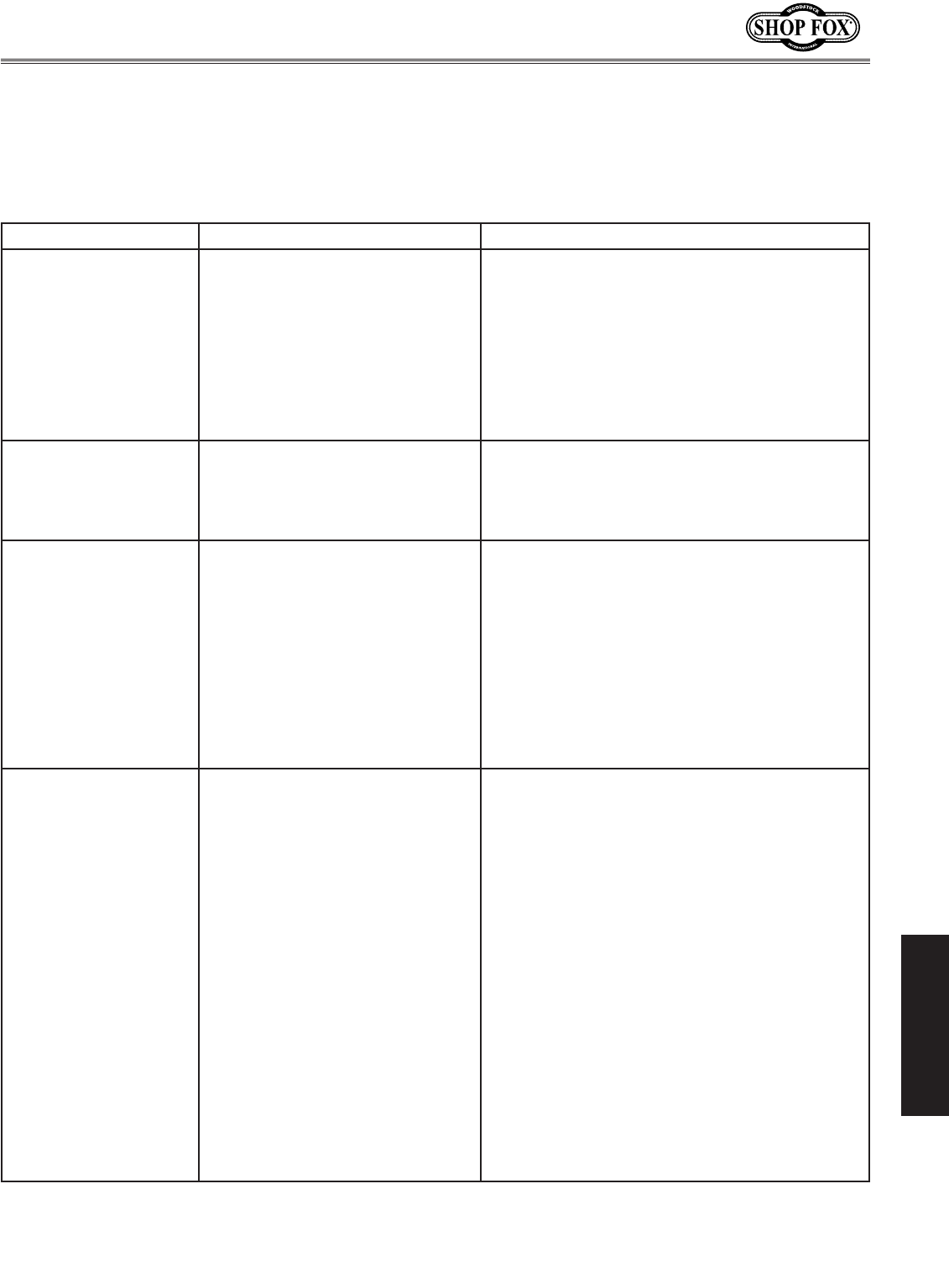
-21-
MAINTENANCE
W1666, W1685 Dust Collectors
Troubleshooting
This section covers the most common dust collector problems. DO NOT make any adjustments until the
dust collector is unplugged and moving parts have come to a complete stop.
SYMPTOM POSSIBLE CAUSE CORRECTIVE ACTION
Motor will not start, or it
growls on start up.
1
. Power supply fuse or circuit
breaker has tripped.
2. Toggle switch is broken inside.
3
. St
art capacitor is at fault.
4. Motor fan cover is dented, stopping
the fan from being able to spin.
5. M
otor is at fault.
1. Disconnect power, and inspect circuit for electrical
shorts and repair. R
eplace circuit breaker if it is
old or has tripped many times.
2. Disconnect power, and use an ohmmeter to check
switch terminals for continuity, and replace switch
if required.
3. Replace start capacitor.
4. Replace motor fan cover (and fan, if damaged).
5. Replace motor.
M
otor runs slower than
normal.
1. Poor electrical connection.
2
. Low power source voltage.
3. M
otor is at fault.
1. Inspect the power supply for loose, corroded, or
overheated electrical connections and repair.
2
. Have the power source voltage checked; reduce
the length of extension cord.
3. R
eplace the motor.
Loud, repetitious noise, or
excessive vibration coming
from dust collector.
1
. Dust collector is not on a flat
surface and wobbles.
2. Impeller fan is damaged and
unbalanced.
3. T
he motor mounting is loose.
4. I
mpeller is loose on the motor
shaft.
5
. Motor fan cover is dented, causing
the motor fan to hit the cover
while spinning.
1. Stabilize the dust collector.
2. U
nplug dust collector, and inspect the impeller for
dents, bends, loose fins. Replace impeller if any
d
amage is found.
3. M
ake sure all fasteners on the dust collector are
tight.
4. R
eplace the motor and impeller as a set if the
motor shaft and the impeller hub is damaged.
5
. Replace motor fan cover.
Dust collector does not
adequately collect dust or
chips; poor performance.
1. Dust collection bags are full.
2. There is a restriction at the inlet
grate.
3. T
he dust collector is too far away
from the point of suction, or there
are too many sharp bends in the
ducting.
4. T
he lumber is wet and the dust is
not flowing through the ducting
smoothly.
5. T
here is a leak in the ducting, or a
series of small leaks, or too many
open ports.
6. T
here is a restriction in the
ducting, or the ducting and ports
are incorrectly sized.
7. T
he dust collection ducting design
is inadequate, or machine is
undersized for the task.
8. The dust collector is too small for
the dust collection system.
1. Empty bags.
2. R
emove dust line from dust collector inlet and
clean debris from the inlet grate (and wire-
connector, if installed).
3. R
elocate the dust collector closer to the point of
suction, and rework ducting without sharp bends.
Refer to the Dust Collection Basics handbook (ISBN
0-9635821-2-7) to help configure your dust system.
4. P
rocess lumber with less than 20% moisture
content.
5. R
ework the ducting as to eliminate all leaks, and
refer to the Dust Collection Basics handbook (ISBN
0-9635821-2-7) for more solutions.
6. R
ework the ducting as to eliminate all restrictions,
and refer to the Dust Collection Basics handbook
(ISBN 0-9635821-2-7) for more solutions.
7. A
sk your dealer for proper dust collection
accessories or the SHOP FOX
®
Dust Collection
Nozzle on Stand.
8. Install a larger dust collector to power your dust
collection system.



